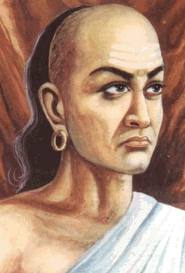- Home
- History of India
- Ancient India
- Ancient India Government
Ancient India Government
Ancient India government
Updated on 17-05-2020
Ancient India government: It is believed that ancient Indian period was very peaceful and calm. People were very understanding and cooperative among each other. However with the growth of civilisation and increase in population there arose the need of a government. When people started to settle at one place for agriculture and livelihood then government came into formation.
People settled were mostly tribes. The head of
the tribe was the king or the ruler of the group. The main aim for the formation of government
at that time was for distribution of responsibilities and work. The model and
the structure of the government was very simple and interesting.
It
is not clear the way people did governance during Indus valley civilisations.
From 6th century BC to 5th BC it is considered as most
important period in ancient India. Beginning of 6th BC northern part
of India consisted of large number of independent kingdoms which was monarchy
in nature. During this period there were 16 Mahajanpadas or kingdoms who ruled
during the Vedic period.
Mahajanpadas were the 16 kingdoms that came into existence in
ancient India between 6th to 4th centuries BC. It gave
rise to major large cities after the fall of Indus Valley Civilisation. They
started to collect taxes, maintain the army and started to build new cities and
conquer new places. The sixteen Mahajanpada include Anga, Assaka, Avanti,
Chedi, Gandhara, Kashi, Kamboja, Kosala, Kuru, Magadha, Malta, Matsya,
Panchala, Surasena, Vriji and Vatsa.

During the Vedic period caste system which
started to rise gave more power to Brahmin. He acted as a decision maker.
In Rig Vedic period government was mostly monarchical. King was ascended through hereditary system. To assist king various ministers were appointed. The administrative units were known as Kul, Gram and Vish. Gram is the village and Vish is group of villages. One can also see a mention of Sabha and Samithi which were the two democratic bodies which controlled King. The head of the judiciary was the king himself.
There was lot of chaos and foreign invasions before the arrival of Mauryan Empire. In the year 326 BC Alexander invaded India by crossing the river Indus. After one year he had defeated the Achaemenid Empire and firmly kept his foot on Indian soil.
The Mauryan Empire was the first largest Empire to be established on Indian soil and ruled ancient India for nearly 139 years from 323 BC to 184 BC. Chandragupta Maurya founded the vast Mauryan Empire with the help of Chanakya at Taxila.
With
the birth of Mauryan Empire and other empire the governance became more
complicated and interesting. The king became the supreme head and the
governance was divided into legislative, executive and judiciary. Everyone had
to accept his decision which was the final one. The ministers advised the king
about their respective jobs. All the minsters were paid salary for their work.
With the increase in population all the concerned ministers started to maintain
the records about the development of work in the society.
They
were answerable to kings. The society was guarded by well developed military
system. The soldiers were well equipped and trained for war. Financial
department played crucial and important role. Every rupee spent was notified to
the king. The finance minster was accountable for the loss and profit in the
governance.
Judiciary
played another important role in maintaining law and order in the society. It
kept a check on the thefts and robberies and punished the guilt. The entire
empire was further divided into provinces and each province was given the power
to make some decisions. They were called as Rajukas. They were present during
the Mauryan period. They became more powerful during Asoka period. The ancient Indian governance was very
disciplined and interesting. There were regular updates of death, birth and
population to the king.
The king himself
disguised some times as a spy and spied the state to know about the welfare of
his citizens. Spy system was an important feature during Mauryan period. The governance was further improved during
the Gupta period. The provinces were given more power in Gupta period than in
Mauryan period. Slowly but steadily governance became an important part in
maintaining peace and growth of society. Arthshastra is one the most important
source to know the governance in ancient India.
Detailed information
on the administration of Mauryan empire can be found in Arthashastra. It was
written by Kautilya also known as Chanakya. Arthashastra is a Sanskrit word
which is translated as science of politics. The book explores about social
welfare, ethics, and explains how to keep a society together. The book offers a
list of seven components of the state. They include King, the ministers,
population, treasury, army and allies.
The Gupta period is known as the golden age of Indian History. The administrative system of Gupta period was somewhat similar to that of Mauryan period. But however the governors of the provinces were more independent as compared to during the Mauryan period. The empire was divided into 26 provinces which were known as Bhukti, Pradesha and Bhoga. Each province was further divided into Vishayas. Each Vishayas had four representatives Nagarasreshesthi, Sarthavaha, Prathamakulika and Prathama Kayastha.
Indeed it is very interesting to read about the ancient Indian government system and also to understand some of the famous Indian dynasties.
Please share your thoughts and more information on ancient Indian Government with us by clicking the link here
Update on coronavirus in India
Affiliate Disclosure:
If you make any purchase via a link on this site, I may receive a small commission with no added cost to you.



